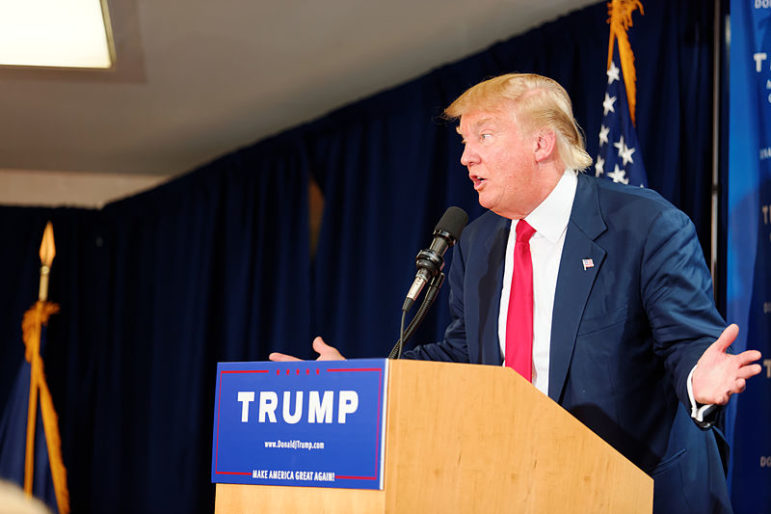
David Fahrenthold’s investigative reporting for the Washington Post attracted much attention and wide praise this year. His series of articles on the charitable activities of Donald Trump and the Donald J. Trump Foundation were so compelling and important to the 2016 presidential campaign that many people are surprised Fahrenthold was also the reporter who broke the story about the infamous 2005 Access Hollywood tape featuring Trump and host Billy Bush (Jeb Bush’s first cousin, by the way) discussing Trump’s groping of women.
Fahrenthold’s extensive reporting was the source for a number of NPQ stories on Trump and the Trump Foundation. We’re not surprised that he has already received the Post’s own Ben Bradlee award for investigative reporting and is being mentioned frequently for a Pulitzer Prize. How did he get the story, and what does it mean for other nonprofits?
Fahrenthold wanted to get the story because public statements made by the Trump campaign about his charity were inconsistent—in short, the numbers weren’t adding up—and the campaign wouldn’t give him the numbers he was seeking. Trump’s personal income tax returns might or might not have provided information on his charitable gifts, but he wasn’t making those returns public. So, Fahrenthold started investigating, looking at online records that were available and talking to people he could reach by telephone and by social media.
Sign up for our free newsletters
Subscribe to NPQ's newsletters to have our top stories delivered directly to your inbox.
By signing up, you agree to our privacy policy and terms of use, and to receive messages from NPQ and our partners.
Form 990 returns are available online through GuideStar, the Urban Institute’s National Center for Charitable Statistics, and ProPublica. DonorSearch’s database of donors helped Fahrenthold understand that relatively few gifts came from Trump personally. Twitter proved especially helpful, allowing the reporter to “deputize” the public to help him, for example, find a portrait of Trump purchased using Trump Foundation funds hanging in a bar at Trump’s Mar-a-Lago golf resort. Unlikely web resources like the Palm Beach Social Diary helped identify charity galas Trump might have attended or been involved with.
The Internet and social media, however, are only part of the story. The rest of the story consists of classic pen-and-paper notetaking and speaking with real people. Fahrenthold made hundreds of phone calls to charities asking about Trump’s claims of support, often finding that he had never made a donation, either personally or through his foundation.
What are the lessons for charities and other nonprofits, almost none of which will ever be associated with a candidate for president? First, the ability to research and investigate nonprofit organizations and activities is easier now than it ever has been, thanks to communications technology and archival access to years of Form 990 returns and other records. Telling an inconsistent or confusing story, then refusing to provide information to clarify the story, is an invitation to a reporter to access those records, draw their own conclusions, and write their own story for the public. At that point, the inconsistencies, not the nonprofit or its programs, become the focus of the story. Fahrenthold’s success will inspire reporters, bloggers, and others to imitate his process and apply it to other charities, so don’t be surprised if the questions your charity is asked start sounding like they’re coming from the Washington Post.
Nonprofits should be sure that the story their documents tell is not only consistent, but also understandable to the general public. For example, the Form 990 is a public relations document just as much as it is an IRS compliance document. Form 990 questions about mission, programs, leadership, finances, and governance should match your organization’s annual report and brochures. Most importantly, if a reporter asks questions about your nonprofit, be responsive and candid. If there are legitimate and verifiable limits of privacy and other legal concerns, acknowledge them: “I can’t talk about the previous executive director because most information about personnel matters is subject to confidentiality under the law, mainly to protect the rights of individual employees.” Generally, honesty and cooperation are the best ways for a nonprofit to preserve its reputation and tell its story. Obfuscation and lack of cooperation can be the same as waving a red cape at a bull or shooting a starter’s pistol at a race, inviting investigation by a motivated person with an impressive array of freely available tools at their disposal.—Michael Wyland












